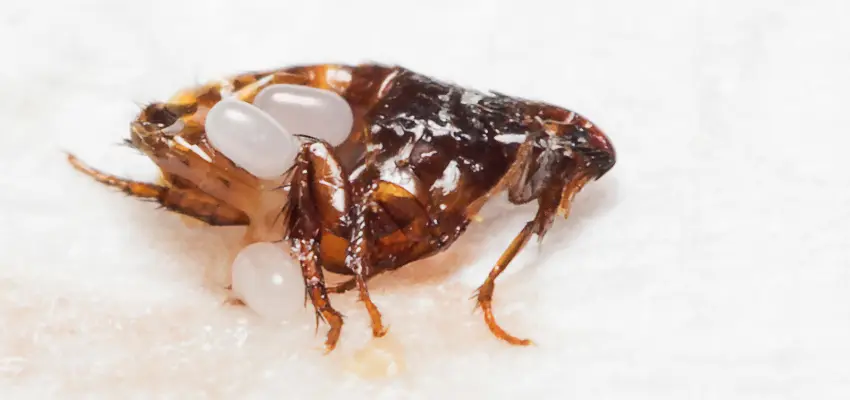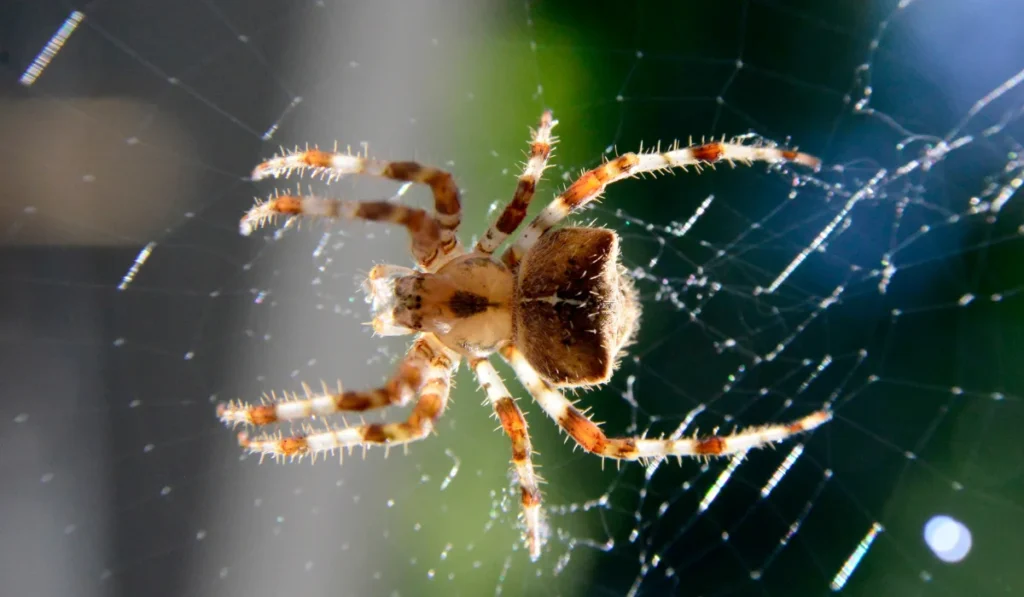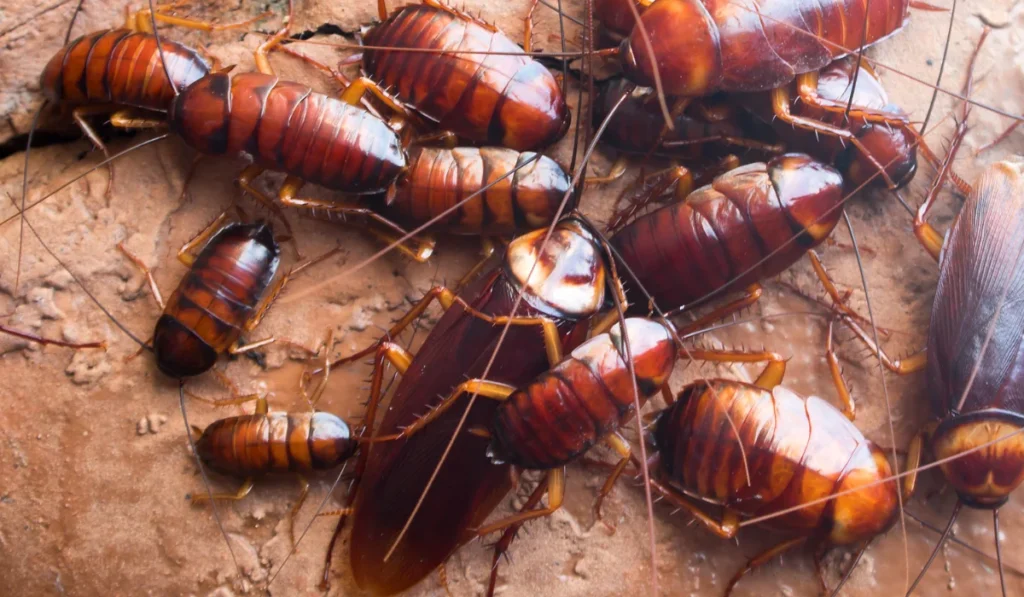
Have you been scratching your ankles or seen your pets scratching themselves more frequently lately? If so, you may have fleas in your midst.
Late summer’s heat and humidity in Alabama create the perfect environment for fleas. Flea populations can multiply rapidly during this time of year. If you’re seeing more fleas now, you’re not alone, and it’s not your fault.
In this guide, we’ll explain why late summer is peak flea season in Alabama, why pet owners feel it the most, and how fleas spread from place to place. We’ll also teach you what signs to watch for, discuss why common DIY fixes usually fail, and which proven treatments work. We’ll show you how to keep fleas out of your home and off your pets all year long.
Key Takeaways:
- Warm temperatures and high humidity speed up the flea life cycle in late summer.
- Female fleas can lay up to 50 eggs a day, quickly leading to infestations.
- Pupae in cocoons stay hidden for weeks, making DIY treatments ineffective.
- Professional pest control is the most reliable way to eliminate all life stages of fleas.
Why late summer is prime time for fleas
Late summer heat and humidity in Alabama make life easy for fleas. The high temperatures speed up their life cycle, while the moisture helps them survive in places like tall grass, under porches, and even inside your home.
Fleas reproduce rapidly. Eggs hatch into larvae, which spin cocoons and become pupae. Pupae are hard to eliminate because they stay hidden until they sense heat or movement. Once triggered, they emerge as adults and begin feeding.
Female fleas can lay up to 50 eggs daily. That means a single flea can lead to a full-blown infestation in just a few days. Many homeowners see one flea and dismiss it as a one-time problem. If you see a single flea, there are likely hundreds hiding nearby. They can even be hiding in the fibers of your carpet, pet bedding, or furniture.
Why Alabama pet owners notice it more
In Alabama, fleas are a year-round problem, but activity peaks in the warmer months, as the flea population has had several months to build up by late summer.
Homes with pets that are allowed to explore outdoors, where fleas may be lurking, are more likely to see flea infestations. Adult fleas will cling to your pet’s fur and start feeding on the pet’s blood the first chance they get. Dog fleas and cat fleas are the most common types that can infest your home, but both can bite humans, too.
Flea bites aren’t just itchy. They can seriously affect pet health. Fleas can transmit tapeworms and can cause anemia in pets, especially small or young ones. They also spread diseases like Lyme disease and Rocky Mountain spotted fever, which can affect both pets and humans.
How fleas spread across regions
Fleas are a widespread issue across the U.S., especially in warm and humid states like Florida, South Carolina, and North Carolina. But they’re not limited to the South.
States like New York and North Dakota can also see outbreaks, particularly during the warmer months or in heated homes during winter.
What flea infestations look like
Many people don’t notice fleas until the infestation is severe.
Knowing how to recognize signs of flea infestations can help you stay on top of the problem before it gets worse. Here are some signs of fleas you can look out for:
- Excessive scratching or licking
- Flea dirt (small black specks) on your pet’s skin
- Flea bites on your ankles or feet
- Hair loss or skin irritation in pets
- Fleas jumping on furniture or around the baseboards
If you notice these signs, act quickly. Fleas reproduce fast and go through their life cycles faster during late summer in Alabama, so it won’t take them long to go from a minor problem to a severe infestation.
Why DIY treatments often fall short
You can reduce flea populations with DIY methods such as flea combs, vacuuming, and washing pet bedding in hot water, but these steps only kill adult fleas. They don’t work on immature fleas. For example, pupae have tough cocoons that can survive even thorough cleaning.
You can kill some fleas with store-bought sprays or foggers, but they don’t solve the root of the flea problem. Commercial pet care products often leave eggs, larvae, and pupae untouched, allowing the infestation to return a few weeks later.
The difference between fleas and ticks
Fleas and ticks are both parasites that feed on blood, but they are not the same. Their behaviour and the problems they cause are different.
First, fleas are insects with six legs that can jump great distances. They’re quick, small, and tend to stay on the host.
Ticks, on the other hand, are arachnids, closer to spiders, with eight legs and no ability to jump. They crawl and latch on when your pet brushes past tall grass or shrubs. Once attached, they dig in and feed for hours or days. Ticks are often harder to spot and remove than fleas.
But even though ticks and fleas are different, both can transmit diseases. Fleas can spread tapeworms and cause anemia, while ticks are known for spreading Lyme disease and Rocky Mountain spotted fever. Year-round flea & tick prevention is essential for protecting your family and your pets.
Effective flea treatment and prevention
While there are plenty of resources for DIY flea control, professional pest control is the best way to get rid of fleas for good.
To keep fleas from coming back after treatment, you can:
- Wash all pet bedding in hot water weekly
- Vacuum floors and furniture daily for at least a week after treatment
- Use a flea comb on your pets to check for live fleas and flea dirt
- Ask your vet about flea prevention products to protect your pet year-round
We also recommend tick prevention if your pets go outside regularly, as tick season overlaps with peak flea season in Alabama.
Keep fleas out year-round
Don’t wait until your pets are scratching or your kids have flea bites. Make flea prevention part of your regular pet care and home upkeep with simple steps such as vacuuming, treating your yard, and keeping up with your pet’s flea control.
At Magic City Pest Control, we offer safe, effective treatments for homes, furniture, rugs, cars, and yards, all pet-safe and family-friendly. You won’t even have to leave while we work.
We work year-round to keep your home pest-free. Request your free quote today and let us handle the fleas for you.
FAQs
Why are fleas worse in late summer in Alabama?
Warm, humid conditions speed up the flea life cycle. By late summer, several flea generations have hatched, causing the population to surge.
What do I need to do before a flea treatment?
Clear your floors, vacuum thoroughly, and wash all bedding. Your pets should also be treated by a vet the same day. Follow-up cleaning is critical to staying flea-free.
How long does it take to get rid of fleas?
Flea treatments usually take a few weeks to work entirely due to the life cycle. It’s normal to see some fleas after treatment as pupae emerge and die off.




